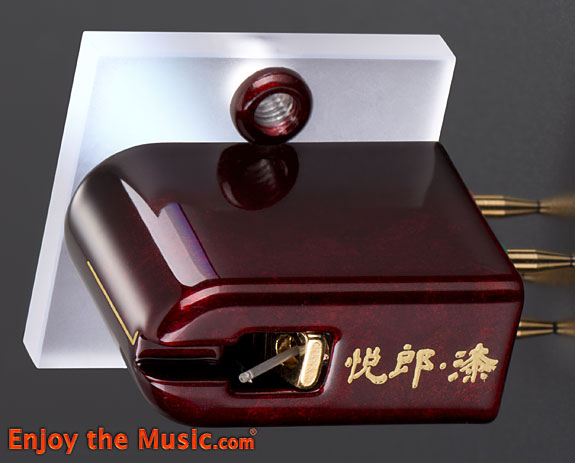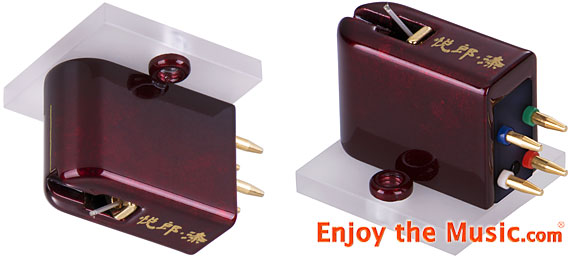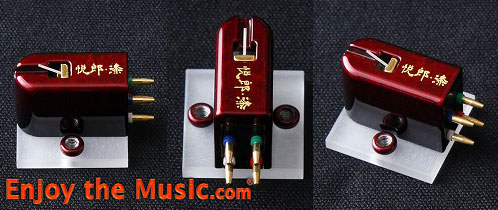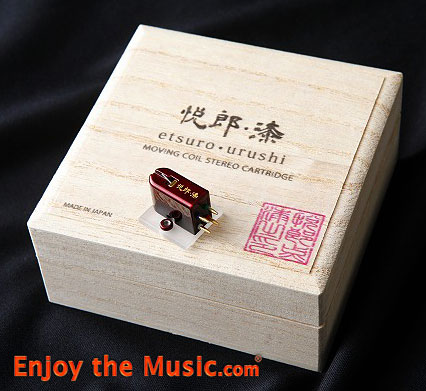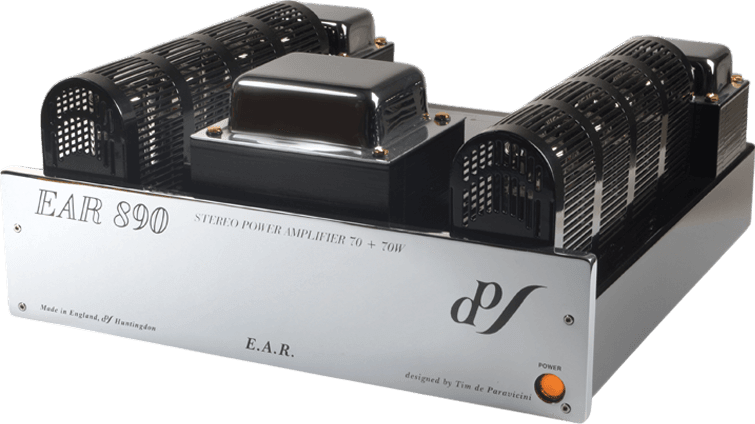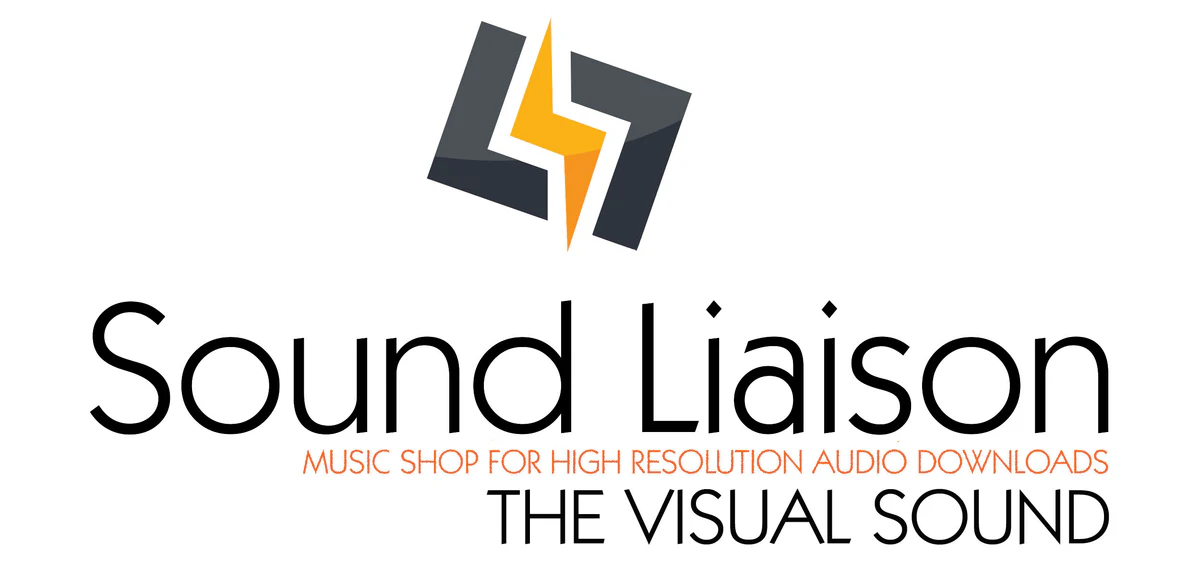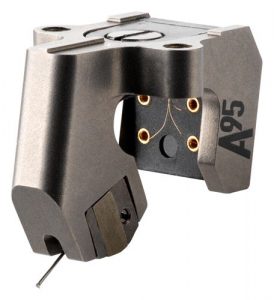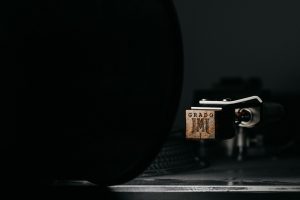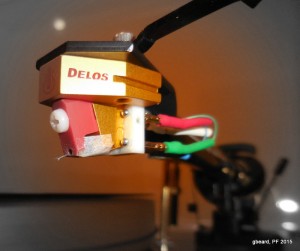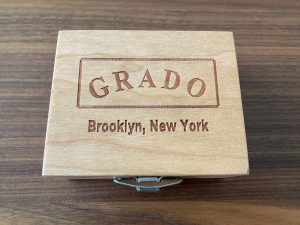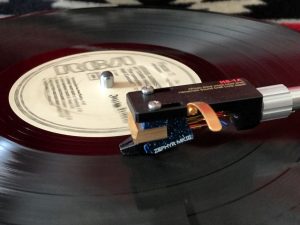Getting closer to the music etched into your LP's grooves.
With this article, Positive Feedback begins its content-sharing relationship with Enjoy the Music. Tom Lyle, who used to write for PF in former years, shares his thoughts about the Etsuro Urushi cartridge. Read, and learn....
Dr. David W. Robinson, Editor-in-Chief
It was about a year ago that I reviewed the cartridge that's one step lower in Etsuro Urushi's line, their Cobalt Blue. In the review I said that the Cobalt Blue is "a super-transparent window into the recording that was etched into an LP's surface," praising this cartridge to the point where one might be led to believe that there is no better cartridge on the market. This is not the first time I've felt as though I have painted myself into a corner when reviewing a piece of high-end audio equipment, which happens more often than not when the equipment performs as well as the Cobalt Blue. In the back of my mind I must have known that there are better cartridges out there to be had. The Cobalt Blue, with its excellent tracking, which I suppose has lots to do with its suppression of the record's surface noise, and just as importantly, its lifelike reproduction of instruments and voices, seduced me. How could it not? It seemed as if my favorite records never sounded better. I got lost in the music.
There is no question that the subject of this review, the Etsuro Urushi Bordeaux, is a better cartridge than their Cobalt Blue, and I'm not saying that just because it costs more. The Bordeaux shares all of the DNA of their Blue Cobalt cartridge, except for one very important feature: Sapphire has been chosen for the pipe material of its cantilever. By using sapphire the makers of the Bordeaux cartridge claim that is has "superb sound transmission character and hardness." It is also apparent that the Bordeaux distortion level measures very, very low, even when transmitting signals that might cause other cartridges to vibrate, "thoroughly eliminating any loss of signal." A plate of pure Sapphire, with a 2.5mm thickness, is also used in the Bordeaux's base section that comes in contact with the headshell. Like the Cobalt Blue, this cartridge uses a stylus with a contact surface of 80μm, a "super micro line diamond chip," which traces the grooves of the record with great accuracy.
The Bordeaux's magnetic circuit is combined with an electromagnetically soft iron and samarium cobalt magnet, which is said to allow magnetic performance consistent to the vibration of the coils to secure overall balance and thickness of the sound it is reproducing. The terminal pins are gold-plated to increase the contact between the terminals and the cartridge clips. The housing of the Bordeaux is handcrafted, and the traditional Urushi finish is also used on "extra-super" duralumin (AL7505). On the cartridge's website, they say that the Urushi coating of each Bordeaux body goes through various complex processes, handmade by the craftsmen of the long established Urushi Sakamoto Company in order to gain rigidity and "the beautiful texture layering of the Bordeaux color."
Getting Started
I mounted the Bordeaux on my Tri-Planar 6 tonearm, which is attached to a Basis Debut V turntable. The cartridge clips of the tonearm are soldered to an integral 1.5-meter cable that was connected to either a Chord Symphonic phono stage or a Pass Laboratories XP-15 phono preamp. The phono preamp was at first connected to my reference Mark Levinson No 523 full-function preamplifier, then to a Merrill Audio Christina Reference, and then a Woo Audio WA33 headphone amplifier/preamplifier during its review period last month, then back to the Levinson and Merrill Audio preamps once the Woo Audio was regretfully sent back to the manufacturer. The power amplifier was my trusty and mighty Pass Laboratories X350.5, which fed via a 12' run of speaker cable to Sound Lab Majestic 545 full-range electrostatic speakers. Despite Sound Lab's claim of a full-range frequency response, there is no question that augmenting them with a pair of subwoofers is beneficial.
The SVS 16-plus subs performed that duty, substituting for my usual Velodyne 15" models. All the front-end equipment was connected to a Goal Zero Yeti 400 battery power supply, except when I was using the Woo Audio headphone amp / preamp because it draws much too much power to be able to connect to this relatively low-powered battery power supply. A PS Audio P300 power regenerator served as speed controller / power supply for the turntable, and a P600 was used to power the Woo Audio preamp when it was in the system. The power cables that weren't directly plugged into the wall (the power amp), or connected to a PS Audio unit, were connected to a Chang Lightspeed ISO 9300 power conditioner, which included but was not limited to the subwoofers and the transformers of the Sound Labs loudspeakers.
When the Bordeaux was first installed the system was mostly wired with Accusound XD, then Black Cat 3202 series speaker and interconnect cable, with the power cable being a mix of older, but very good sounding Virtual Dynamics, MIT, and other brands. But soon into the review period I rewired the entire system, which included the power cables, with Wireworld cable (review forthcoming). I auditioned the Etsuro Urushi Bordeaux phono cartridge in a dedicated listening room that is treated with acoustic treatment panels, LPs lining the walls, and commercial-grade carpet. It has two separate power lines that are connected directly to our home's circuit panel in the basement.
Music Via Vinyl
From the first record I played, it was apparent that the Bordeaux was a very fine sounding cartridge. Since I had recently spun some records with the Cobalt Blue mounted onto my tonearm, the sound of that cartridge was fresh in my mind, and so the difference between it and the newer Bordeaux were immediately apparent. This was a cartridge that sounded much better than simply a Cobalt Blue on steroids, this cartridge entered into a totally different class of transducers, one that could easily compete with the very best phono cartridges available today.
Lately I've been very into trombonist Grachan Moncur III's premier album Evolution. It was recorded and released in 1963 on Blue Note Records with an all-star cast of Lee Morgan on trumpet, Jackie McLean on alto sax, Bobby Hutchinson on vibes, Bob Crenshaw on bass, and none other than Anthony (Tony) Williams on drums. My copy of this LP is a reissue that I picked up at Tower Records in NYC during the 1990s, the dark days of digital CD-mania, yet Blue Note and Impulse! Records were both reissuing great sounding 180-gram vinyl. Luckily the prices were still relatively low, perhaps because vinyl sales had slowed so much during this era, so I was able to pick up quite a few titles.
This record is so good that the music on it was distracting—I was supposed to be evaluating the Etsuro Urushi Bordeaux phono cartridge, after all. But I prevailed. This was because this cartridge had a way of drawing me into the music, each instrument was presented with such a lifelike presence it was startling. Still, during my listening sessions, I couldn't help but think of the Bordeaux's little brother, the Etsuro Urushi Cobalt Blue that I spent so much time with before the arrival of the Bordeaux. The Cobalt Blue is an outstanding performer—that's why I praised this cartridge so much in its review. But I'm going to have to eat crow, because even though I loathe taking the easy way out and simply stating that the Bordeaux is like a Cobalt Blue on steroids, that is a fine way of describing this cartridge. All the positive traits of the Cobalt Blue are amplified when listening to the Bordeaux. The lifelike reproduction of each instrument on this fabulous Blue Note record sounded amazing, and it was so easy to imagine in my mind's ear each musician standing in the studio playing their instrument, the cliché of my turntable turning into a time machine was a bit disquieting. I could swear I smelled cigarette smoke while spinning this album!
Most of side one of this Grachan Moncur III album is taken up by the spacey, sort of free-jazz / contemporary title track, which was practically a showcase for the Bordeaux cartridge, and Grachan Moncur III and the fantastic band he assembled for this recording. The surface noise of this reissue is relatively low, but any residual noise seemed to be completely ignored by the Bordeaux, as it traced the grooves of this LP with expertise. And so, the only sound behind the quiet ambience of Rudy Van Gelder's recording studio was tape hiss, each of the realistic sounding instruments rose out of this relative blackness. I got lost in the music on the album, and before I knew it, I was hearing the thump, thump, thump of the outer groove of the album, reminding me to flip the record and listen to side two.
Shortly after soaking up the Blue Note album I put the Classic Records pressing Led Zeppelin's Physical Graffiti double album on my turntable, the best vinyl release of this album I've ever heard. This is an album I've been listening to all of my adult life, and I was never impressed that much with the sound quality of the double vinyl until I heard this Classic Records pressing, released in the very early 2000s. I admit I probably sound like a snob, claiming that the sound quality wasn't up to snuff until I heard this reissue, but this album was released in 1975, and that just happened to be when USA pressings of vinyl really started to go downhill. I suppose that affected my impression of this album. Those who were lucky enough to acquire a UK pressing back in the day most likely had no complaints as far as sound quality was concerned, but most of us in the USA didn't have that privilege.
Later on I did hear an early UK pressing, but by that time finding a copy in pristine condition for myself proved to be quite expensive. I purchased the Classic Record version as soon as it was offered. To hear this album with zero surface noise and a slamming low-end on the Classic pressing was a revelation. And I've continued to enjoy it ever since it became part of my Led Zeppelin vinyl arsenal. When spinning this record during the review period it was a showpiece for the sonic prowess of the Bordeaux cartridge. It clearly was able to demonstrate the differences in sound quality between many of the tracks on this album, some of which were recorded nearly two years apart from each other. But regardless of when the tracks were recorded, John Bonham's drums resonated like a combination of a huge marching bass drum and a submarine depth charge. Every time he triggered his kick drum, or slammed on a floor tom-tom, it shook my gut to the point where if I listened to more than one side of the album I started feeling a bit queasy.
On the other hand, when Jimmy Page played an acoustic guitar, regardless of what type it was, I could picture a living, breathing, real human being playing the instrument. The Bordeaux created a palpable image as part of the huge soundstage, filling the front portion of my listening room. Often the guitar sounded much larger than life, the microphones obviously placed very close to the guitar's body to create a giant instrument spread across the front of the soundstage. This album has so many moods, so many different types of instrumentation. From the Indian inspired to the hard rocking, it seems to have it all. And the Etsuro Urushi Bordeaux was able to handle it all, making this album sound the best I've ever heard.
I just realized that I have nothing negative to say about the sound of the Etsuro Urushi Bordeaux phono cartridge. As I predicted in the beginning of the review, I've again painted myself into a corner. No, the Etsuro Urushi Bordeaux is not the best phono cartridge on the market. But judged on its own, the only negative I can think of, although it might not really be a negative only because it has nothing to do with the sound of this phono cartridge, is system matching. The output impedance of the Bordeaux is 3 Ohms. Which means that one must set one's phono preamplifiers appropriately. The lowest setting of my Pass Laboratories phono preamplifier is 10 Ohms. The lowest setting of the Chord Symphonic phono preamp is 33 Ohms.
The USA distributor of the Bordeaux feels that one should set the phono preamplifier "wide open," and I agree with that, but I found it best to start from there and then work my way up to hear how it sounded. Although I felt that both the 10 Ohm setting on the Pass Labs, and the 33 Ohm setting on the Chord phono preamplifier were equally satisfying. Depending on the rest of one's set-up, some audiophiles might feel differently than I did, but I still I think that any high-quality phono preamplifier will likely yield excellent results. But I also believe that one should use the best phono preamplifier that one can acquire, which only makes sense when using such an excellent phono cartridge.
Conclusion
I hope I was able to put into words what I think the Etsuro Urushi Bordeaux sounds like, and how it differs from the cartridge that is one below it in the Etsuro Urushi line, their Cobalt Blue. The Bordeaux has all the positive traits of the fantastic sounding Cobalt Blue, which I can still heartily recommend, but the Bordeaux amplifies every single positive trait of this cartridge. I think the Bordeaux is well worth its asking price, because it has all the characteristics I could ask for in any extremely well-made high-end phono cartridge, as it brought me so much closer to the original event that was etched into the grooves of all the records I played. I think any audiophile who is looking for a cartridge anywhere near the asking price of the Bordeaux should give it serious consideration. I can't image them being disappointed with it. The Etsuro Urushi Bordeaux deserves to be matched with some of the best analog front-ends of the best high-end audio systems because it is one of the best high-end phono cartridges you'll likely hear anywhere near its price.
Specifications
- Type: Moving coil
- Frequency Response: 15Hz to 50kHz
- Output Voltage: 0.25 mV / 1kHz
- Output Balance: <0.5dB / 1 kHz
- Channel Separation: 33dB / 1kHz
- Tracking Weight: 2 grams
- Impedance: 3 Ohm / 1kHz
- Trackability: >70μm/2gr
- Stylus Shape: 80μm microline diamond
- Cantilever: 0.4 φ sapphire pipe
- Cartridge Base: 2.5mm Sapphire Plate
- Cartridge Housing: Extra super duralumin (A7075)
- Housing Processing: Special Grade Urushi Handmade
- Terminal Pin: Gold-plated
- Cartridge Weight: 9 grams
Etsuro Urushi Bordeaux Cartridge
Retail: $8500
Etsuro Urushi
Dai-Ichi Shoji Co., Ltd.
The Landmark Tower Yokohama 20F
2-2-1 Minatomirai Nishi-Ku
Yokohama, Japan
+81 45 228 3251
United States Distributor
Believe High Fidelity
Austin, TX 78634
Check Out Enjoy the Music for more articles and reviews




